|
About a month ago Richard Welsh from Public Relations emailed and asked if I’d share a pair of links with you. I looked them up and said sure. They’re all about vetting a doctor if you live in Florida, but the advice applies anywhere. Here are the links Richard sent me, and what I thought about them. Picking a doctor is important, but it’s critical if you’re facing surgery. You want the best doctor doing your operation. An ounce of pre-op research is worth a pound of post-op complications. The 1st link: Vetting a doctor before surgery - fhvlegal.com/vetting-doctor-before-surgery/ The 2nd: A checklist to keep things simple - Vetting a Doctor Before Surgery Checklist  Part 1 – Research – This is the first, and most important step. That’s because research plays a part in all the other steps you take to find that doctor, who’s just right for you.  - Check their credentials. Search your state’s Department of Health for your doctor’s name and license status. Check to see if there are any errors or mistakes on their record, or if they’ve received any disciplinary action. Richard shared Florida’s Department of Health link, but your state should have one too.  - Check for board certification and professional associations. The American Board of Specialties has a button that lists all of them. Find the one you need, then your doctor’s name. You’ll see what he/she is certified in. The Florida site also has a list of associations. Use it as a guide to find the ones in your home state.  - Check reviews online or from people you know. Try websites like Healthgrades, Vitals, RateMDs, and local hospitals, and don’t forget to talk to the people you know.  Part 2 – Ask Questions – Some questions will come from your research. Others will pop up as you move forward. Think about the things you want to know about the surgery and the doctor who’ll do it. If you’re worried, jot down your questions. The answers will make you feel better, or they’ll drive you to find more information. Maybe you’ll even seek a second opinion. Here are some suggestions from the Florida site that might help you find your way.  - Ask about experience – How often does your doctor operate per week? The more, the better. What’s their experience, positive and negative? (Ask your surgeon, their patients, even your friends and family doctor.)  - Ask about successes – How does your doctor define success, and what’s their success rate for your surgery? What kind of anesthesia will they use, and are there side effects? Where can I find testimonials/referrals for you as a surgeon, or from your patients?  - Ask about continuing education – What’s your doctor doing to stay current with new developments within their area of expertise? Are there alternative options, and what do they say about them?  - Ask about surgery, post-op, and recovery – What are the risks and side effects of surgery? What will it cost? How long will I need hospital care? What is the post-op plan? Will I need therapy? What will insurance cover, and what’s my cost? How long until I’m recovered and back to work/normal? These are all basic questions from the Florida website. They can help you find answers to your own unique situation.  Part 3 – Get Referrals – Ask people you know. They’ll help you in your search for the right doctor. How? Ask them to refer you to a specialist or to a procedure.  - Get referrals from your primary care doctor. That’s where I go to find a specialist. I trust my doctor and his/her suggestions. Doctors get feedback when the patient returns. If they’ve had a good experience, they’ll continue to send the specialist new patients. If it was a bad one, my doctor would have to decide if they’d recommend them again. I’ve been happy with all the specialists my primary care doctor recommended, except one. Practically perfect is a great record😊  - Get referrals from people you trust. Ask the people you know. Like family, friends, or acquaintances for their recommendations. I was lucky, I always found someone in the teachers’ lounge who’d experienced the new problems that appeared with age. I never asked someone I didn’t trust.  - Ask for another referral, or a second opinion. If something feels wrong, get another opinion. It will either confirm the information you already have, or it will confirm your suspicions. Sometimes you have to listen to your gut; then do the research to help you make a good decision.  Part 4 – Red Flags – Look for red flags when you vet a new doctor. When you have a bad feeling, listen and check it out. Maybe it’s your imagination, but maybe it isn’t. Do your due diligence. Then decide if you want to move forward, or search for a new doctor.  - Lacks board certification. If a doctor doesn’t have it, there’s a reason why. Either they lack the training and evaluation, or it’s been pulled because of malpractice. This is a HUGE Red Flag that you should find someone else.  Check credentials. Look at a physician’s experience. If you have a choice between someone who does 1-2 surgeries a week versus someone who does 50, who would you pick? My father chose the one in the 50-a-week club for his, and I’m glad he did. Don’t forget to check for malpractice claims, disciplinary actions, and for patterns of negligence. These are NO-GO signs. My advice – find another doctor.  - Examine everyday behaviors for flags. When you meet with the doctor, do they rush through the appointment, or fail to answer your questions? Do they dismiss your concerns without explanation, or refuse to consider other alternatives? You’re paying the doctor, and he serves you. If he doesn’t, look elsewhere. Look to see if the doctor’s office is clean and organized. If it’s not, it tells you something about the way they do business. Do what feels right for you – after all, you’re paying the bill. Finally does the doctor pressure you to make a decision, without getting a second opinion? My daughter had one of those doctors, so we checked with another one. He offered advice and monitored her for changes over the next several years. I’m glad we said thanks, but no thanks to the first one. 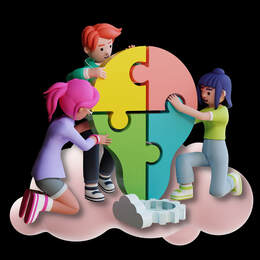 Part 5 – Final Thoughts & Conclusions – At the end of the process, vetting a doctor is like trying to fit the right puzzle pieces together. If you do it well, you have a match that fits you and your family. If you feel like you’re shoving a square peg into a round hole, you probably are. I’d take a fresh look at your research, plus a few new variables.  Double-check your insurance coverage. Healthcare is expensive, and insurance is the gate keeper. Make sure your choices are covered, or consider making a change. Otherwise, be prepared to pay a little, or A LOT More for your medical bills. Your financial health is another important part of this decision.  Trust your instincts/gut. If you have a bad feeling about a doctor and/or surgery, listen. Sometimes your gut is your first and strongest warning sign that danger lies ahead. Getting a second opinion can give you peace of mind. Mental health is part of your physical health too.  Make sure you’re comfortable with your decision. Knowing you can trust your doctor for information. That they don’t pooh-pooh your choices can give you peace of mind when your body is under stress. That’s a very good thing 😊  Don’t forget accessibility. If your surgeon is hours away, getting treatment and follow-up care can be tricky, and expensive. On the other hand, if your doctor makes you feel safe, like you’re in good hands, it might be worth driving a little farther to get that safety net. So in conclusion, take the time you need to make a good decision. Don’t forget the doctor serves you. You’re paying for their time and expertise. Make sure you’re getting what you paid for.
0 Comments
Do you recognize this landform? It’s the continent of Antarctica. It’s the only continent without a single country, although 22 have a ‘consultative’ status. That’s because they agreed to a 1959 treaty. They promised to keep Antarctica as a scientific preserve, like a national park. It was to be preserved as a place of scientific study and environmental protection. One of my critique partners, Sandra Martin Denis just got back from Antarctica. She was there during the summer, the warmest time of year. It’s funny – Antarctica’s summer is during our winter. Part 1: It came straight from Sandra’s trip – her photos and her words. Enjoy! Penguins live in Antarctica. Penguins live in colonies. They're great swimmers. They spend half their time in the water and half their time on land. They are expert divers. They eat krill, fish, and squid. Penguins mate for life. They build nests of stones. Most penguins lay two eggs in a clutch. The male and the female take turns incubating the eggs, except for the emperor penguin. They build "highways" on the snow. Their main enemy is the Leopard Seal. Sandra didn’t have a picture of one, but I found these two on Pixabay. Yikes! Look at those teeth. OUCH! Part 2: A trivia question about Antarctica’s climate. What is the average temperature range for Antarctica per year? 10°C to -60°C 10°C to -10°C 30°C to 20°C -5°C to -10°Celsius 50°F to -76°F 50°F to 14°F 86°F to 68°F 23°F to 14°Fahrenheit Take a guess, then check below the map. I completely missed this one. Antarctica is warmer than I thought! The annual temperature for the whole continent ranges from about −10°C on the coast to −60°Celsius. In Fahrenheit that’s 50°F to -76°F. Wow, 50 is way warmer than I imagined. That’s like a warm March day in Ohio! But it all depends on – location, location, location.  That 50°F was near the coast, in the summer. That’s where Sandra was, but she said she wore a parka. Maybe at night when the sun goes down, the coastal temperature drops too. In the winter – that coastal temperature gets even colder, -40, and that’s the reading on both Celsius and Fahrenheit thermometers. That surprised me. I’ve never seen the two temperature scales match, with the same exact number. Incredible! I’m glad Sandra didn’t go inland, especially to the mountaintops. Their warmest temperature – -22. That’s one of the worst winter days in Ohio, ever. I don’t want to think how cold it gets in their winter. Ready? That’s -112?! Holy frostbite, that’s cold! And the coldest temperature ever recorded on earth? -128.56, at the Vostok station in Antarctica. That’s where scientists live. And the date – July 21, 1983. YIKES! Part 3: Wind Speed and Snowfall by the Numbers  Those temperatures, like -112 F are without the windchill. To find that, I looked up the wind speed on the antarctica.gov link below. I don’t want to do the math, but if you can imagine, an Antarctic wind can blow at 100 km/h, and it can blow for days! I don’t do kilometers, so in miles per hour – that’s 62. If you want to imagine it, stand beside a highway. That’s how fast cars will drive by. I’m feeling colder already! Are you ready for the strongest winds? That’s 200 km/h or 124 mph, or the wind speed of a Category 3 hurricane. YIKES – x 2! ☹ As for snow – the average accumulation for the whole continent of Antarctica is 150 mm of water per year, or 5.9 inches. If you’re not sure what that looks like, find 6 on a ruler. When you go inland to the elevated plateau, the annual value drops to 50 mm. That’s only 1.96 inches. But at the coast, it rises to 200 mm or 7.87 inches. But for the heaviest rain or snow, find the peninsula in the northwestern corner of the map. It stretches to the north, and the Bellingshausen Sea is below it, to the south. It’s not labeled, but it gets over 1000 mm of water. In inches that’s 39.37. Think yardstick, then add your index finger for another 3 inches. That’s a lot of water!  Sources: For more information: www.antarctica.gov.au My source: What is the average annual... | Trivia Answers | QuizzClub Map: By Robert Simmon - en:Internet Archive - https://web.archive.org/web/20070823123915/http://earthobservatory.nasa.gov/Newsroom/NewImages/images.php3?img_id=17838 (originally http://earthobservatory.nasa.gov/Newsroom/NewImages/images.php3?img_id=17838 NASA Earth Observatory), Public Domain, https://commons.wikimedia.org/w/index.php?curid=3126858  Do you have parents or grandparents who need to look for a new home? I’m happy to share this guest blog from Kent Elliot AtHomeAging.info. Keep reading – he has seven great tips to help seniors find the house that fits them now. The journey into retirement marks a pivotal phase in life, demanding a living space that transcends the ordinary, blending comfort, safety, and convenience. This stage requires careful consideration of certain key features in a home, ensuring it not only meets your present needs but also gracefully adapts to your evolving lifestyle in the years ahead. This comprehensive guide, courtesy of Rinda Beach, aims to illuminate those vital characteristics that make a home ideal for your retirement years. Part 1: Embracing Open and Accessible Spaces In your search for the perfect retirement residence, prioritize homes that boast open, barrier-free floor plans. These designs are more than just modern and visually appealing; they are practical, enhancing mobility and reducing the risk of accidents. An open floor plan facilitates easier navigation, particularly important as mobility concerns increase with age. Additionally, these spaces foster a warm, inviting atmosphere, ideal for hosting family gatherings and maintaining an active social life, which is essential for mental and emotional well-being during retirement. Part 2: Accessibility with Wheelchair-Adapted Entrances 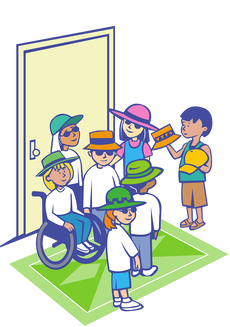 For retirees who use wheelchairs or other mobility aids, the presence of wheelchair-friendly ramps and wide doorways is a critical feature. These adaptations are not merely conveniences; they are essential for maintaining independence and ensuring safe access around your home. Homes equipped with these features underscore a commitment to accessibility and inclusivity, vital for a comfortable and dignified retirement life. Part 3: Assurance Through Home Warranty Protection When downsizing, it’s important to consider your insurance options. While homeowner’s insurance covers damage to the structure, injuries, and theft, it doesn’t cover appliances or major systems. That’s why you should work with a home warranty company to find a policy that works for you. These warranties are crucial for safeguarding against unexpected repairs and maintenance issues, particularly for essential home systems like heating, cooling, and plumbing. With such protections in place, you can spend your retirement years enjoying your home without the concern of potential unforeseen expenses and the hassles of home repairs. Part 4: Enhanced Living with Intelligent Home Systems In the modern age, homes equipped with smart technology offer significant advantages, especially for retirees. Look for properties that feature intelligent home systems, such as automated thermostats, lighting controls, and advanced security systems. These technologies not only provide unparalleled convenience but also enhance safety and independence. The ability to control various aspects of your home environment with simplicity and ease can significantly improve your quality of life, allowing you to focus on enjoying your retirement rather than being bogged down by mundane tasks.  Part 5: Seamless and Safe Access The entrance to your home should be more than just aesthetically pleasing; it should be designed with safety and accessibility in mind. Homes with step-free entryways are crucial for preventing trips and falls, common concerns as one ages. Such design considerations ensure that your home remains accessible, safe, and welcoming, regardless of any mobility challenges you or your visitors might face. Part 6: Safe and Comfortable Bathing Solutions  Bathroom safety is paramount, making accessible walk-in showers a must-have in your retirement home. These showers–along with grab bars and corner protectors–are designed to help provide safer and more comfortable bathing experiences. They minimize the risk of slips and falls, a significant concern for seniors, and provide the convenience necessary for maintaining personal hygiene independently and with dignity. Part 7: Ease of Access with Ergonomic Handles 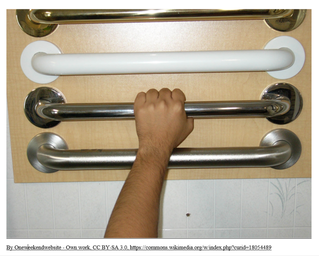 The usability of a home extends to the smallest details, like door and faucet handles. In your retirement home, look for ergonomic lever-style handles, which are far more user-friendly than traditional knobs, especially for those with arthritis or limited hand strength. Such thoughtful details in a home's design can make a substantial difference in your day-to-day life, ensuring that every aspect of your home is accessible and easy to navigate. Final Thoughts Selecting the right home for your retirement is a decision that encompasses much more than just the property's location or aesthetic appeal. It's about finding a space that ensures your comfort, safety, and independence in the years to come. By focusing on these essential features, you ensure that your chosen home is not just a dwelling, but a sanctuary that supports and enriches your life throughout your retirement. For more information, check out Kent Elliot of AtHomeAging.info
The holiday season fills some people with hope, but it can send others into despair. That’s why I decided this was the right time to do a post about it. I have three inspiring quotes. My wish – that each one will help you feel a tiny bit more hopeful. Quote # 1 – I have been bent and broken, but — I hope — into a better shape. Who said it? Charles Dickens Charles Dickens is a famous British author. Have you ever read or watched A Christmas Tale? It’s one of his most famous books. It’s the story of Scrooge, the ultimate miser, who’d rather save a penny than pay it to one of his employees. He’s visited by three ghosts – Christmas Past, Present, and Future. It changes his life, and it proves there’s still hope, even for an old miser! Take a look at these two houses. The first is where Charles Dickens was born. It’s tiny! It begins with the first white door and ends after the two windows. Tiny! The other house is Gads Hill Place. Would you believe his father told him, if he worked hard enough, someday he could buy that house, or another one just like it? The best part about this story, 35 years later, Dickens bought that house when he discovered it was for sale. Dreams do come true! His life wasn’t filled with sunshine and rainbows. When Dickens was 12, his father spent his way into a debtors’ prison at Marshalsea. His mother and younger siblings had to live there too. Dickens and his sister didn’t. They were in school, so they had to visit the family on Sunday. Later that year, Dickens had to quit school and work in a blacking factory. The second sketch is of him, slumped over a desk, exhausted. He worked ten hours a day, 6 days a week, pasting labels on pots of black boot polish. His pay – 6 shillings a week. That experience would shape the stories he’d write. You’ll find his story best told in David Copperfield. Note – I used a currency converter to change Dickens’ 6 shillings into pounds. In 2017 he would have earned £17.23 (pounds) or $21.60 a week. I’ve been bent and broken” is a quote from Great Expectations. It reminds us that there’s hope, a silver lining, when we face challenges and work our way through them. Most people think of books written and published as one completed novel. That wasn’t true for Dickens. He wrote many of them as monthly installments in literary journals. Later they were reprinted as books. The best part – it made his stories cheaper and more accessible to a wider audience, beyond just the wealthy. For Dickens it gave him more time to explore and develop his characters and plots. He learned to leave cliffhangers at the end of each installment – to keep readers waiting for the next episode. And yet his plots held together across an entire book. I’ve known and watched A Christmas Carol since I was little, but I’ve never wondered what Dickens looked like. The first painting was done by Margaret Gillies in 1843. Dickens was only 31, and he was busy writing the story of Ebenezer Scrooge. The second was painted by Jeremiah Gurney sometime in 1867/1868. Dickens was about 55. No wonder he looks so much older, and perhaps, more serious. Dickens was prolific in his writing, and you can see that in the painting, Dickens’ Dream by Robert William Buss. The tiny black and white illustrations are the characters Dickens brought to life in his books. Prolific fits! The final photo is of his grave on the floor of Westminster Abbey. I was there, and shocked to find you could step on it. I couldn’t. This photo is from 2012 when England was celebrating 200 years of his stories. People are still turning them into modern movies. They’re still reprinting his books and selling them on Amazon 😊  Quote: Daily Inspiration | Inspiring Quotes Information: Charles Dickens - Wikipedia Gads Hill Place - Wikipedia Currency converter: 1270–2017 (nationalarchives.gov.uk) Quote # 2 – Hope springs eternal in the human breast. Who said it? Alexander Pope  Alexander was a famous writer born in London, England in 1688. That was about 60 years after the Pilgrims landed at Plymouth Rock. He died in 1717. That was almost 60 years before the American Revolution began. His parents were Catholic, and he was influenced by a series of laws that promoted the Church of England. They also banned Catholics from teaching, attending universities, voting, or holding government office. If you broke the law by doing any of those things, you went to jail. His aunt taught him how to read, and he went to several Roman Catholic schools in London. They were illegal, but tolerated. These are two of the houses Pope lived in. The first photo is recent. It’s of a building now known as the Mawson Arms. Way back when, it was the home of Pope’s parents. He lived in Mawson Row in Chiswick with them for 3 years, from 1716 to 1719. During those same years Pope was translating the Odyssey by Homer. By 1719 he’d earned enough money to buy the second house, in Twickenham. The house and the gardens were torn down to make room for something new, but his grotto is still there. The quote ‘Hope springs eternal’ came from his poem An Essay on Man. When he wrote that line, he was writing about his Catholic faith and the hope for life after death. I’m Lutheran, but I believe in the same things about hope, life, and the afterlife. Here’s a list of the poems and stories he wrote during his lifetime, and the translations he made so that English men and women could read them.  Quote # 2 – Hope springs eternal in the human breast. Who said it? Robert Frost Robert Frost was a famous American poet. He was born 9 years after the Civil War ended. He died in 1963, one year before the Civil Rights Act was passed. It was supposed to end discrimination based on race, color, religion, or where you were born. Imagine being born just after the end of slavery and living to see the fight to end discrimination. I was 4 when Robert died, and I’ve seen a lot of change in my lifetime. Robert lived to be 89. I’m only 64. I wonder what I’ll see if I live to be 89, like Robert. His three biggest achievements – Robert is the only poet to earn 4 Pulitzer Prizes for Poetry. In 1960 he was awarded the Congressional Gold Medal for his writing, and the next year Vermont named him their Poet Laureate. I always think of a laureate as someone’s favorite poet, but they’re actually supposed to write poetry for them. In this case, for Vermont. This is one of Robert’s homes. It’s in Derry, New Hampshire. He wrote many poems when he lived here, from 1900 until1911. It looks like a peaceful place to write, but his mother died from cancer, and he lost 2 of his children during that time. Life wasn’t perfect, but it fueled his work. The quote, ‘The best way out is through’ came from a collection Robert published in 1914. The poem, “A Servant of Servants, is not a happy one. I read it, and I felt depressed. It’s about a housewife who spends her day cooking, cleaning, and taking care of others. The only way out was to work your way through the day. According to the folks at Inspiring Quotes.com, hope and stubborn determination can get you through your troubles. This is one of my father’s favorite poems. The other one is also by Robert Frost. Sorry, the only thing I’d change about this image. . . the woods. It should be more yellow. That’s the way he wrote it. The poem is “The Road Not Taken”’ as it was featured in Robert’s 1916 book, Mountain Interval. Here’s a list of Robert Frost’s work from Wikipedia. His first poems were published in 1913. His last, in 1969. What a legacy of work he gave us during those fifty years of writing! Poetry collections
 Quote: Daily Inspiration | Inspiring Quotes Link: A Servant To Servants, by Robert Frost Information: Robert Frost - Wikipedia  I’d like to thank Cassidy Walker at Media Consulting for reaching out and offering this post from Harriet Moore. It’s on one of my favorite subjects – pets, and how to pick the right one for you. Pets can make wonderful additions to family life by bringing us companionship, unconditional love, and an excuse for the family to spend more quality time together. In fact, 94% of pet owners feel that having a pet makes them happy, and 84% credit their pet with improving their mental health. If you’re thinking about getting a furry, scaly or fluffy friend but you’re not sure which animal is right for your family, follow these three important tips to help you choose. Tip #1 - Consider how active you are or would like to be. Every pet needs some form of regular exercise, but some are more reliant on their owners for exercise than others. Dogs are the most demanding in this respect, requiring at least two walks each day, although the amount of ground you cover on each walk will depend on the size and energy level of the breed. If you want to be more active, getting a dog is a great option. If you already get plenty of exercise and don’t have the time or inclination for much more, a small pet like a hamster or rabbit could be a better choice. Keep in mind that you’ll still need to provide your pet with toys or equipment for exercising, such as a wheel or climbing tower. You may also need to supervise their exercise or play with them to encourage them to get active. Tip #2 - Assess your Home Environment and Available Space Some pets need more space than others, and it’s not just their size that dictates how much space they need. For example, rabbits require an enclosure that is at least eight square feet and tall enough for them to be able to stand on their hind legs. They also need an additional 24 square feet of secure space in which they can exercise. Some pets, such as dogs, need frequent access to outdoor space and are best suited to properties with yards or gardens. Others, such as cats, are content living indoors but require additional equipment such as climbing trees and scratching posts to keep them entertained and active. Tip #3 - Determine your budget for upfront costs and monthly expenses It’s vital that you consider the affordability of a pet in both the short and long term. Upfront costs include the pet’s price or adoption fee, essentials such as enclosures, bedding and toys, and vet fees for things like vaccinations and neutering. Ongoing monthly expenses include food, toileting supplies, flea and worm treatments, pet insurance, and grooming fees. You should also think about irregular additional expenses, such as boarding or pet-sitting fees when you go on vacation. Dogs tend to be the most expensive pet, costing between $700 and $2,000 per year, while fish are one of the least expensive, costing between $50 and $200. Keep in mind the expected lifespan of a pet and ask yourself whether you can realistically commit to the ongoing expense for the entirety of the animal’s life. Final Thoughts - Take your time to choose the perfect pet Welcoming a new pet into your family is a huge commitment, so don’t rush into it too quickly. Take time to research different pets thoroughly to understand what they need for a happy, healthy life. Next, consider your time and activity level, your environment and space, and your budget to determine whether you can give an animal everything it needs. When you choose a pet carefully like this, you can be sure they’ll fit into your family life perfectly.  Meet My Guest Blogger, Harriet Moore
 Sheila Brooks from DigitalEdgeMarketing.org emailed and asked if her team could collaborate with me on a post about mental health and well-being. She let me pick the topic. My choice . . . Protecting Teens from Social Media Health Risks. I’m glad I took a chance on Sheila. Her team came up with some great tips for you and me. Living in this constantly budding era of new media technologies and information overload can be challenging to navigate, especially if you are a parent to a teenager. With the rise of social media networks over the past decade, it’s important to stay aware of how these websites and apps operate in order to keep your children safe online. Teaching yourself and your teen how to engage in proper online social etiquette can help prevent negative experiences on the internet, and can even improve real-life communication as well. Tip #1: Peer Pressure Awareness: While there is a lot of funny and educational content available for engagement on social media, unfortunately, there are also corners of these websites that lean toward participating in unsavory and unhealthy behaviors. Videos and posts that encourage or celebrate teen drug abuse, bullying, and romanticizing unhealthy coping mechanisms flourish online, especially on youth-centric social media sites like TikTok. If your teen is thinking of making a social media account, be sure to sit down with them and discuss the realities surrounding peer pressure. When you encourage your teen to appreciate their unique selves, they can feel more secure in themselves and their own online presence. Part 2 – Teach Your Teen About Algorithms As social media websites have continued to develop and change since their inception, so have the ways that content is displayed on these networks. In the early days of sites like YouTube and Facebook, the most recent posts from accounts you were friends with or subscribed to were shown on your personal homepage first. Nowadays, most social media sites rely on targeted algorithms that push “stickier” forms of content to the top, which typically leads to posts with inflammatory subject matter.  Teaching your teenager about the way that these algorithms operate will help them see those patterns in action on their social media homepages. Hopefully, by knowing that the algorithm is fishing for engagement, your child can make better choices about which posts to interact with, and which ones to ignore. Part 3 - Setting App Timers Because of how easily accessible the internet is nowadays, sometimes the biggest social media health risk is not the content itself, but the amount of time spent on the apps in general. Spending multiple hours a day on social media can cause physical conditions like eye strain and interrupted sleep schedules, potentially affecting school and mental health. These apps are highly addicting, especially for developing minds, and setting timers on mobile/personal devices can be helpful in curbing the overuse of social media. Talk to your child about how much time they want to spend on social media, and find a happy medium between your expectations about online time and their desire to stay connected. Modern parenting means staying updated on what can enter your child’s life experience, especially in the unfiltered online world. Finding a balance between setting clear boundaries and letting your teen experience social media on their own can be challenging, yet highly rewarding for you and your child in the long run.  I’d like to welcome guest blogger Gwen Payne to rindabeach.com. If you’re an introvert who’s feeling stress, Gwen has a few ideas and links to help you feel more like yourself again.  As introverts, we often find ourselves feeling drained and overwhelmed in social situations. While some may view this as a weakness, it is important to recognize that introversion is simply a personality trait, and one that can be an asset if we learn to embrace it. With self-care, we can ensure that our unique needs are met and that we can thrive in the world around us. 1. Find Quiet Spaces Whether it is a secluded room in your home or a nearby park, finding quiet spaces where you can recharge is essential for introverts. This allows us to step away from the noise and distractions of the world and focus on our thoughts and feelings. Make sure to schedule regular quiet time into your routine and prioritize it just like you would any other appointment.  2. Communicate Mindfully Introverts often struggle with communication, but it is important to remember that effective communication is key to building strong relationships. Instead of focusing on what you are going to say next, make an effort to truly listen to others and respond thoughtfully. This will help you build deeper connections with those around you and feel more comfortable in social situations.  3. Start a Fitness Routine Regular exercise has been shown to improve mood and reduce stress levels in introverts. Look for fitness activities that speak to your interests, whether it is yoga, hiking, or simply taking a walk in nature. Make it a priority to get moving every day, even if it is just for a few minutes.  4. Embrace Your Unique Nature One of the most important steps in building a self-care plan as an introvert is to embrace your unique personality trait. Instead of feeling ashamed or embarrassed by your need for quiet time, recognize it as a strength and find ways to celebrate it. This can include setting boundaries with others, saying no when you need to, and prioritizing alone time.  5. Prioritize Deeper Relationships While introverts may not have as many friends as extroverts, the relationships we do have tend to be deeper and more meaningful. Make sure to surround yourself with people who understand and appreciate your introverted nature and who support you in your self-care journey. Focus on building quality relationships rather than quantity.  6. Limit Alcohol Consumption Introverts are often more sensitive to external stimuli, and alcohol can intensify these effects, leading to feelings of overstimulation and anxiety. Therefore, moderating alcohol consumption can help introverts maintain a sense of calm and control in social situations. If you are an introvert struggling with drinking too much, cutting back on alcohol consumption can be a daunting challenge. However, it is important to acknowledge that professional help may be necessary to overcome addiction. Look for rehabilitation sites in your state. They can provide a safe and supportive environment for individuals seeking to cut back or stop their alcohol use. Before choosing a treatment facility, learn about their accreditations, certifications, and specific treatment programs available. If affordability is an issue, look for a rehab center that offers payment assistance.  7. Limit Time on Social Media Social media can be a valuable tool for staying connected with others, but it can also be overwhelming and draining for introverts. Set limits on your social media use and make an effort to disconnect regularly. This will allow you to focus on your own thoughts and feelings without being bombarded by the opinions of others. By following these tips, introverts can build a self-care plan that prioritizes mental health and wellness. Remember that self-care is not selfish, but rather a necessary part of living a happy and fulfilling life. By taking steps like building deeper relationships, limiting alcohol consumption, and starting a fitness routine, you will find that you have more energy and enthusiasm for the world around you.  Gwen Payne is a stay-at-home mom with an entrepreneurial spirit. Over the years, she has mastered raising her two daughters while side hustling to success through small ventures based on her passions -- from dog walking to writing to e-commerce. With Invisiblemoms.com she hopes to show other stay-at-home parents how they can achieve their business-owning dreams.  An Email: Have you ever gotten a message about something you’d done? That happened on Tuesday, the day after I shared Gwen Payne’s first two ideas. Jacob Bryant emailed that he saw them and found them helpful. Jacob also asked if I’d be interested in adding two links to Gwen’s post. They’re about mesothelioma. It’s a rare kind of cancer, but it doesn’t matter what kind you get. It can wreak havoc with your life. I checked his links, and I think his information about mental health and cancer could help you, or someone you know. - Mesothelioma and Mental Health – A guide to coping with a cancer diagnosis. - Mesothelioma – A guide to everything you should know about this disease.  What is the one thing you can’t buy? Love! Poets write about it. Songwriters sing about it. There’s nothing better than being loved, and there’s nothing worse than feeling unloved. I found three inspiring quotes about its power. #1. “He has achieved success who has lived well, laughed often, and loved much." That’s what I see when I look at this family. Their love for each other. I see their smiles, maybe even a giggle. It looks like life has treated them well. So who wrote it? It was Bessie Anderson Stanley. I couldn’t find any pictures, but I found a little information about her. Bessie was born in Newton, Iowa in 1879. She got married in 1900 and moved to Lincoln, Kansas. She died in 1952, when she was 73.  In 1904 Brown Book Magazine wanted to know in 100 words or less, “What is success?” Bessie took a chance, and she won first prize, $250. If Bessie hadn’t entered that contest, we wouldn’t know anything about her. Bessie wasn’t a writer, but she won another prize. Some people thought her words were written by Ralph Waldo Emerson. Others, by Robert Louis Stevenson, and they’re both famous writers. Bessie wrote one piece for one contest. Today she has ten links to her quote on Google, and she’s credited with them too. Words, they can live forever!  Sources: Quote: Daily Inspiration | Inspiring Quotes Information: Bessie Anderson Stanley - Wikipedia #2. “Hate cannot drive out hate; only love can do that.” Can you guess which picture shows hate? Did you pick the one that shows it in words – like pick apart, beat down, or assault? I’m glad I didn’t show it in action. Hate pushes me away, with only its words. And love, of course it’s shown in the last two photos. I couldn’t find one with just words, but who needs them when pictures work better? Love pulls people together. It doesn’t matter if they’re young or old, and, it pulls people away from hate. If you had to cross out a photo, I bet you’d pick the first one. It’s just plain mean! So who first said these words about love and hate?  It was Martin Luther King Jr., and everyone knows his name! That’s because we celebrate his birthday on the third Monday in January. His real one, always January 15. Martin was a Baptist minister and a civil rights activist. He believed everyone should be treated according to the content of their character, not by the color of their skin. His words about love, they were part of a 1957 sermon for his Alabama church. Martin didn’t just talk the talk . . . he walked the walk. He believed in nonviolence, and he was inspired by his ministry, and by Mahatma Gandhi. Mahatma changed life in India. His tool – peaceful protest. Martin is famous for his March on Washington D.C. in 1965. More than 250 million people came from all over the country to see him. It was the largest peaceful protest back then. And the name of his speech . . . I Have a Dream. His speech, beautiful! His words still shine 60 years later. They’ve even been turned into a children’s picture book. If you’d like to hear part of it, click on the link below, under sources. I was thrilled to read his words. They’ve shaped my life. It’s true . . . Love is all powerful,  Sources: My Picture Book Link: Watch | Facebook Quote: Daily Inspiration | Inspiring Quotes Information: Martin Luther King Jr. - Wikipedia #3. “Above all do not forget your duty to love yourself.” I think that’s exactly what these photos show. Taking care of yourself is key. So is giving yourself time to think, time to breathe. When you love and care for yourself, it makes it easier to love and care for the people around you. So who wrote these words?  It was Søren Aabye Kierkegaard. This is an unfinished sketch from the 1840’s. Søren was from Denmark, and he lived from 1813 – 1855. He was a man of thoughts – a theologian, philosopher, poet, social critic, and a religious author. He wrote about Christianity and morality, ethics and psychology. He believed in the value of the individual, and their view of reality. He believed people should make personal choices and commitments. He preferred those very real things to the abstract. This quote was written to a friend with a physical disability. Søren told him that even though he might feel different from others, he should still value and love himself, and so should we.  Have you ever met a bat up close and personal? Not the baseball kind. The bat, who flies through the night. I have, four times so far. Keep reading, and I’ll tell you some true stories about me, and my bats. Story # 1 – The Bat and the Mop The first bat flew through this backyard in Lengerich, Germany. If you were a bat, you’d stop in every night to feast on its bug buffet, but not that night . . . it tried the door. Most German windows don’t have screens, and the back door, it was open. So that bat flew inside and did a few laps. I called it a bird, and my German friend, night bird. We argued until she pulled out a big, thick book. I thought she was going to hit the bat. Nope! It was a dictionary, and she pointed at a German word, Fledermaus. Beside it, in English, I saw bat, and that’s the moment it hung upside down from the curtain rod. No Fake, Jake! What should we do? Well, we argued some more, and that bat watched and listened. Finally my friend tried the garage, and I was stuck with the bat. I had to do something, so I tried a mop. I held it up to the bat, hoping it would fly away. Nope! Three limbs clutched my mop. The fourth, held tight to the rod. We stared at each other, like forever, at least until I heard my friend’s footsteps. I yelled door. Thank goodness she left it open, and that bat finally flew a few laps, then left through the door. That’s the short version of my brush with a bat. If you’d like the one with more juicy details, try this link: http://www.rindabeach.com/blog/the-true-bat-story Story #2 – A Pillow Fight, with a Bat! Believe it or not, I wasn’t the lead actor for this story . . . that role went to my husband, but I guess I was still the leading lady, and the villain . . . the bat. This is my only bat story where it got to be the villain. The other three times, poor bat! It stumbled into the story. This one started when my husband woke me during the night. He called, cover your face. Note – I hate doing that. I get too hot, and then I have to kick off the covers. When I asked why, he said there was a bat in our bedroom. I know – a bat, flying laps, around my bedroom. YIKES! It was enough to keep me undercover, because this bat wasn’t nice, not like the others. My husband said every time he popped his head out, the bat dive-bombed him. And the sound it made, I don’t remember the syllables, but they were high-pitched and squeaky. They sounded mean, like he was shouting, this is MY room. Not Yours! Finally my husband had enough. Not me, I stayed undercover. He grabbed his pillow and started swatting. The bat pillow fight was on! But it wasn’t the nice kind, the slumber party kind. My husband swatted the bat to the floor, and it screeched – I’ll hurt you, I will! I was terrified, but my husband and the bat, they were still fighting, with that pillow. A few minutes later he yelled, get a shoe! Why? So he could knock it down, for good. Every time he swatted, that bat flew back up a moment later. NOT NICE! It could have flown away. So I scrambled for a shoe, staying close to the ground. I think I tossed it. I wanted it there, fast, but I didn’t want to knock my husband out either! He grabbed the shoe, hit the bat, and the battle was over. That fast! My husband carried it outside. My guess – he didn’t touch it. A bat that mean, might have had rabies. Afterwards I was so thankful it picked our room, not our daughter’s. She was probably middle school age back then, and a bat would have totally freaked her out. Our two boys wanted to keep it as a souvenir, but we said NO! We called a park ranger. He lived two doors down, and he took it away before we got home. We never heard if it had rabies, but I’ve always wondered. PS – I always think of this as my second bat story, but now, telling it for the first time ever, our kids must have been much younger. My guess – in grades 6, 4, and 1. No wonder I was so thankful that bat never crawled into our daughter’s room. PPS – How did it get in? Our guess – it flew in the fireplace. It’s on the bottom level of our house. Then it flew upstairs and crawled under the door. It had too . . . it was the only way in . . . Both of our bedroom doors were closed. What an adventure! Thank goodness we lived to tell! Story #3 – Tennis Anyone? Game, Set, Bat! Have you ever swung a racquet at a bat? I have, but my heart wasn’t in it. It was the third time I’d met one up close, but it was the scariest. Maybe, because I was all alone this time. It all started when my husband decided to cap our chimney. It sounded like a good idea, but I had no idea what it would set in motion . . . Not one. Not two, but three bats flying through our house. They must have called the chimney home, until that cap trapped them inside. There was nothing they could do, except fly through our house. They were looking for a way out, but the doors and windows were all closed. My husband was in Tennessee the night the first one flew through. I was in Ohio. His advice – grab a tennis racquet. Easy for him to say! He can hit the ball, and I can’t. That racquet made me feel a little safer. At least I could defend myself, sort of. My other defense, the one I was good at, hiding in our bedroom with the doors shut tight. Thank goodness that bat never crawled under either door. I think we were scared of each other. The second night the bat flew up and down the stairs a few times. I swung and missed each time, but it finally disappeared. I didn’t search, not me. It was bigger than the other bats, with wings that filled the stairs. He flew up and around me and my racquet. What an acrobat! My husband came home the third night. It took a few days, but he took out each member of our tiny bat colony, all three. I wish they’d found their way back into the night again. Story #4 – My Latest Bat Adventure Would you believe my last one was in May, this May? Or that my other bat experiences helped me face this one? Yes, it was this May, and yes, to those experiences. This time it started with me sitting in our living room at the lake. I was working on my newest manuscript. It’s a middle grade novel, and I’m so excited about it. Anyhow, my husband came inside and said, there’s a bat on the porch. I thought, in the middle of the afternoon? He also said he wanted me to take care of it. I said, huh? What? He said that I was the batlady. Okay, I have said that, and a lot. Then he said I could take care of it. I thought a moment. Then I thought suck it up buttercup, and I headed outside, armed with a six-foot piece of baseboard. And no, I wasn’t going to hit the bat with it. I got outside and of course I didn’t see the bat, like usual. My husband pointed, and there it was, hanging onto the base cap. I googled to find that word. It’s the baseboard that goes around the top of a wall, or the top of a porch. My tiny new friend was on the base cap beside the front yard. It looked like a small bird, but birds can’t land on a base cap. I looked, then wondered if I could really help it leave. Then I thought suck it up buttercup again, and I held my baseboard up to that bat. Nothing! I wondered if it was ignoring me, or sleeping. Did you know bats sleep during the day and fly at night? I tried again. Nothing again! The third time – it stretched out its wings. Yowzah! Suddenly that bat looked a lot bigger, but I sucked it up, and I held that board up one last time.
OOOPS! I forgot to tell you I was talking to the bat the whole time. On that last try I told my winged friend it couldn’t sleep on the porch. I said fly away. Find a better place to sleep. Guess what? It worked! My friend flew away, and I haven’t seen it since. BTW – My tiny new friend probably lives in the mini-woods on either side of our house, but this is the first time we’ve met. Why? Bats avoid people the way people avoid bats. I thought I should build it a house, but I realized I don’t need to – my bat has lots of houses to choose from. They’re called . . . TREES! When I think of whales, this is what I picture . . . one of them leaping out of the water. They are magnificent! How could such a huge and mighty creature find itself beached, without a chance of swimming back out to sea? It should be something that’s impossible. I’d never want to see a whale die like this – beached. Stuck in the sand, without a chance to escape, but 25 have died this way since December 1, 2022. Many, along the New Jersey and New York shoreline. Our government has been studying these deaths since 2016, and 186 whales died in those six years. That’s a lot. The highest – 2017 – when 34 whales beached themselves. So, 25 whales in three months, that’s super high. I hope this isn’t a record-breaking year. Scientists have done necropsies on 13 of those 25 whales. We have autopsies when we die to tell us why. Whales, they have necropsies. Out of the 13 examined, 8 died because they ran into boats and ships. The other 12 whales – the scientists are still waiting on those results. Usually if a whale beaches itself, it’s sick. Sometimes it’s trying to avoid sharks or killer whales. But 25, that’s way higher than normal. What’s going on? No one knows for sure. Some people suspect global warming. Others wonder if it’s the new offshore wind farms. Everyone has guesses, but no one knows the true answer, for sure.  Source: As More Dead Whales Wash Up in NJ and NY, Officials Eye Research Into Wind Farms – NBC New York Part 2 – Which Whales Beached Themselves, and Where? The NOAA (National Oceanic and Atmospheric Administration) has been tracking where the whales beached themselves along the eastern seaboard. It’s mostly been on the shores of New York and New Jersey, but it stretches all the way down to Florida. Do you have trouble imagining the size of something large? I do. That’s why I added these two pictures to this post about whales . . . to help us imagine just how big they are. The average school bus is 35 feet long, probably longer than a classroom. And an elephant, he weighs about a ton, whether he’s from Africa or India. Humpback whales have suffered the most. Eighteen of these giant creatures have stranded themselves along beaches between New York and North Carolina. This photo shows a humpback mama and her baby, a calf. Humpbacks range from 46 feet long, probably the mamas, to 56 feet for papas. A humpback is longer than one bus, but not as long as two. (That would be 70 feet long.) And their weight? Up to 44 tons. Imagine – 44 elephants – sitting on your lap. Poor lap! Only 3 sperm whales have been stranded, so far. They were found on beaches between New York and Florida. Three is a lot less, and they were scattered far apart along the Atlantic coastline. Male sperm whales can be 52 feet long. That’s about a bus and a half. (Two buses are 70 feet in length.) Male whales weigh 50 tons. That’s 50 elephants sitting on your lap. No thanks! Females, like the one in the photo, are about 36 feet long, just a little longer than your bus. They only weigh 15 tons, but I would still say no if 15 elephants asked to sit on my lap. And a new baby whale – it’s only 13 feet long. If you add a yardstick to its length, you’d have half a bus. As for the weight, only 1.1 tons. That’s one elephant, on my lap? No thanks, I’d rather sit beside that elephant. Oh, I mean baby whale! Meet a mama and baby North Atlantic right whale. I don’t understand why they’re right, not left. Maybe you can look it up and report back to me and my readers. Only two of the right whales have been stranded – along the shore of North Carolina and Virginia. I guess it’s good to be right 😊 Right whales are about 43 – 56 feet long. That’s about as long as the other two whales. The short ones are as long as a bus, plus the height of a 6-foot basketball player. The long ones are a bus long, plus four kids stretched out in front of it (if they’re about 5 feet tall). And their weight? DO NOT let them sit on your lap! Each whale weighs about 100 tons. I don’t want to imagine 100 elephants anywhere near my lap ☹ These are sei whales! I’ll say . . . that’s how you say their name. Not like see or sigh. Only one of them has been stranded, along the North Carolina coast. Sei whales are about 64 feet long. Put two school buses together. Then subtract that 6-foot basketball player. These whales are long and thin, and they only weigh 31 tons. I thought they were the thinnest, but female sperm whales have them beat by 16 tons. Still, I’d prefer those 15 elephants, or 31, sitting beside me, not on my lap. This is a minke whale. You pronounce it ming-key, and only one has stranded itself, on a New York beach. Minkes remind me of dolphins. Maybe because they’re the shrimps of the stranded whale world. Males are only about 27 feet long. That’s 8 rulers shorter than your school bus, and they only weigh 7.7 tons. Seven elephants or eight, they’re still not sitting on my lap! The females – they RULE! They’re about 29 feet long. That’s 2 feet longer than the males, but they’re still not as long as your school bus . . . Think 2 yardsticks shorter. AND the females, they weigh about 9.01 tons . . . That’s 2 TONS more than the guys! Female minke whales rock! And their 9 elephants, they’re sitting beside me too. Here’s that map again, in case you need to look at it again. Part 3 – A Summary and My Conclusions: These are results over 3 months, from December 2022 through February 2023… Number Kind Location 18 humpback whales New York to North Carolina 3 sperm whales New York to Florida 2 North Atlantic right whale North Carolina and Virginia 1 sei whale North Carolina 1 minke whale New York Did you notice that no whale has beached itself north of New York? Or that most of these whales are choosing beaches north of North Carolina? It must have something to do with the water temperature. Evidently these whales like colder water, especially the humpbacks who have suffered the most. I hope scientists can figure out why whales are doing this, and then find a solution. I would hate to see the humpbacks, or any of the other whales, disappear from the earth. Fingers crossed! 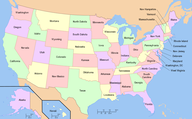 Sources: Map: The original was edited by Andrew c to include Nova Scotia, PEI, Bahamas, and scale key.It was originally uploaded to the English Wikipedia with the same title by Wapcaplet:20:57, 9 October 2005 . . Dbenbenn . . 959x593 (339217 bytes) (fix South Carolina label)20:27, 9 October 2005 . . Dbenbenn . . 959x593 (339227 bytes) (typo, Massachussetts -> Massachusetts)19:01, 9 October 2005 . . Dbenbenn . . 959x593 (371653 bytes) (crop, and remove some shapes (rivers, highways, capitals, lakes) that didn't display anyway)13:18, 23 September 2005 . . Ed g2s . . 990x855 (978668 bytes) (fix (removed <image /> tag))23:48, 23 September 2004 . . Wapcaplet . . 0x0 (978926 bytes) (SVG map of the United States. Created by Wapcaplet. {{GFDL} }) - see below, CC BY-SA 3.0, https://commons.wikimedia.org/w/index.php?curid=362916  Sperm Whale photo - By Gabriel Barathieu - https://www.flickr.com/photos/barathieu/7277953560/, CC BY-SA 2.0, https://commons.wikimedia.org/w/index.php?curid=24212362 Information: As More Dead Whales Wash Up in NJ and NY, Officials Eye Research Into Wind Farms – NBC New York |
AuthorWhen I write, I can only have one voice in my head, mine. A little noise is fine. But too much, or worse yet, WORDS, and I must change rooms or pull out headphones. Then I can write on! Categories
All
|



























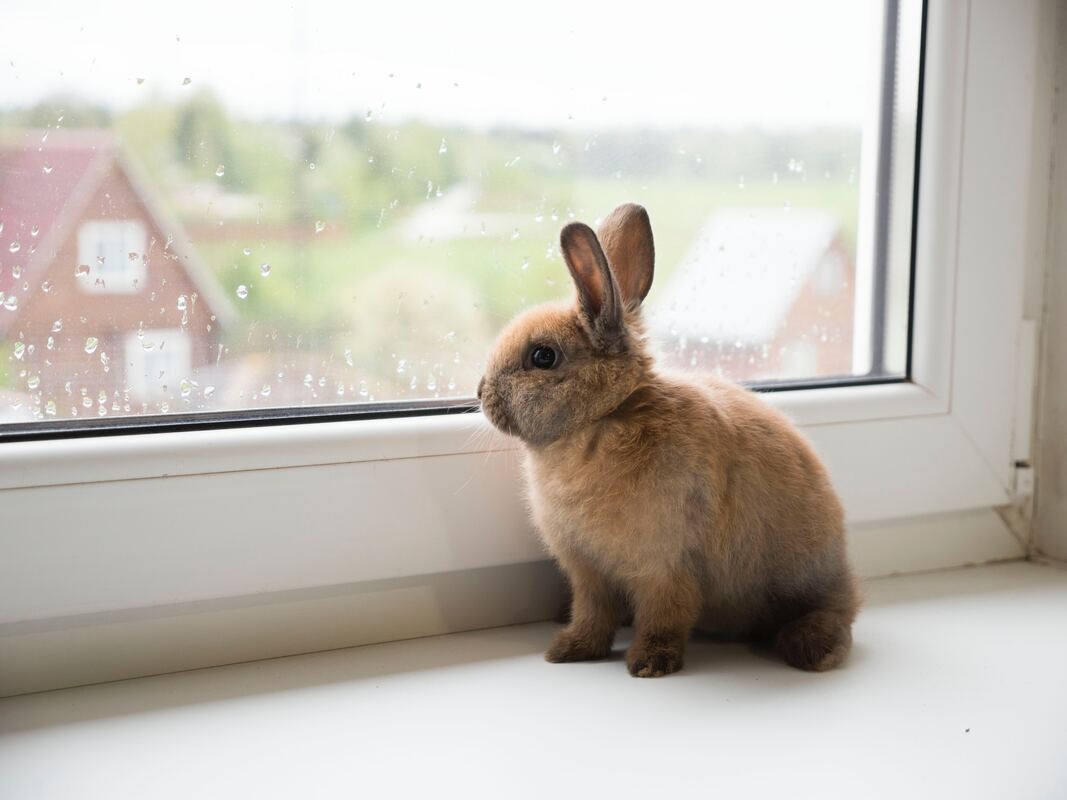
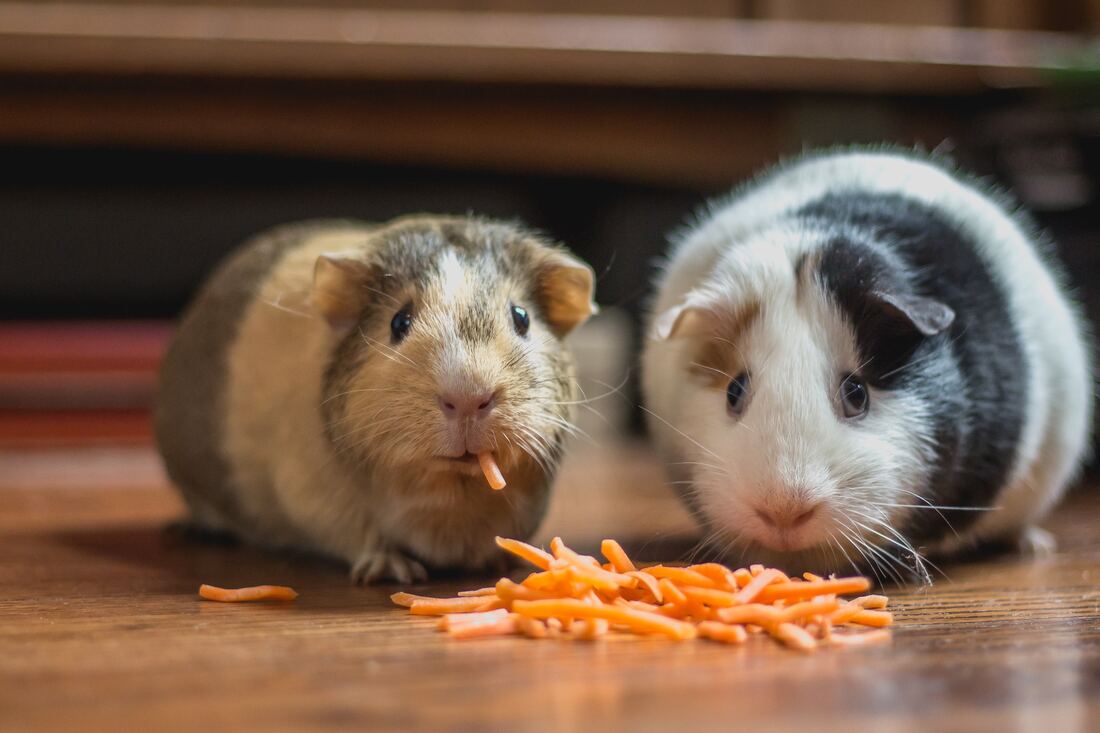















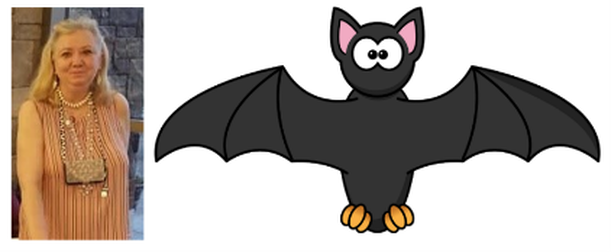

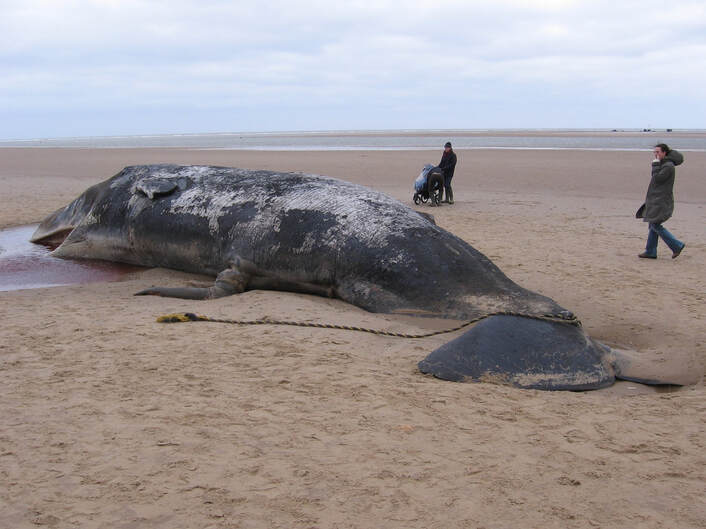
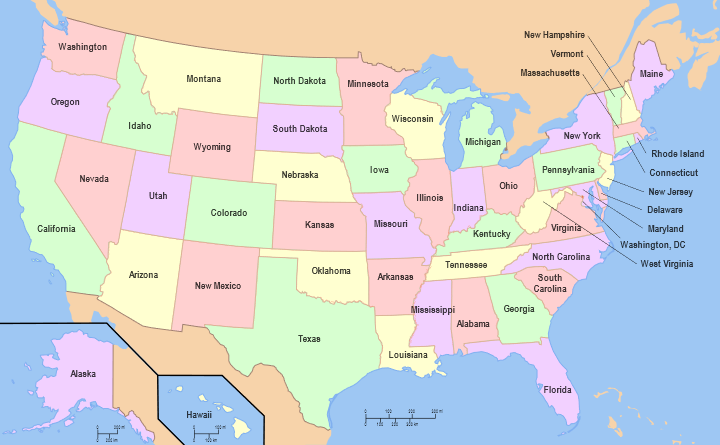







 RSS Feed
RSS Feed